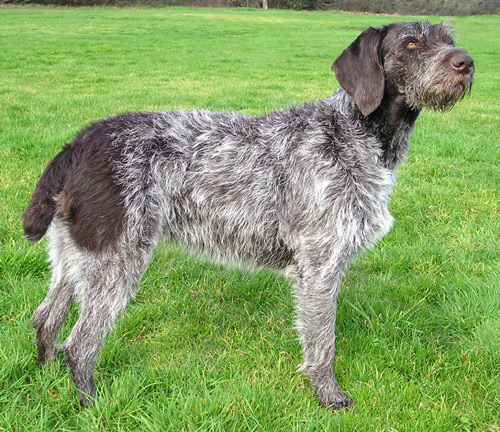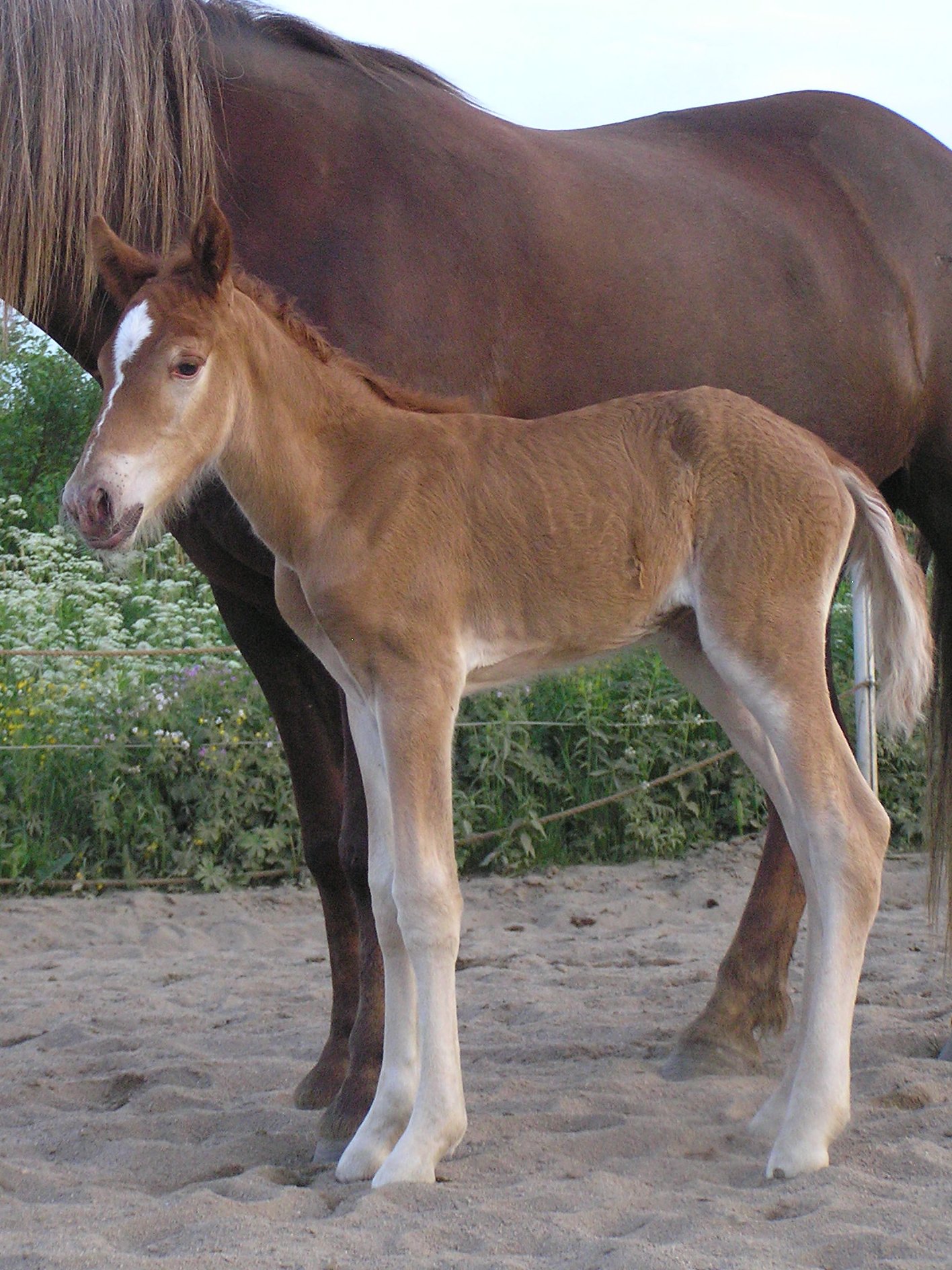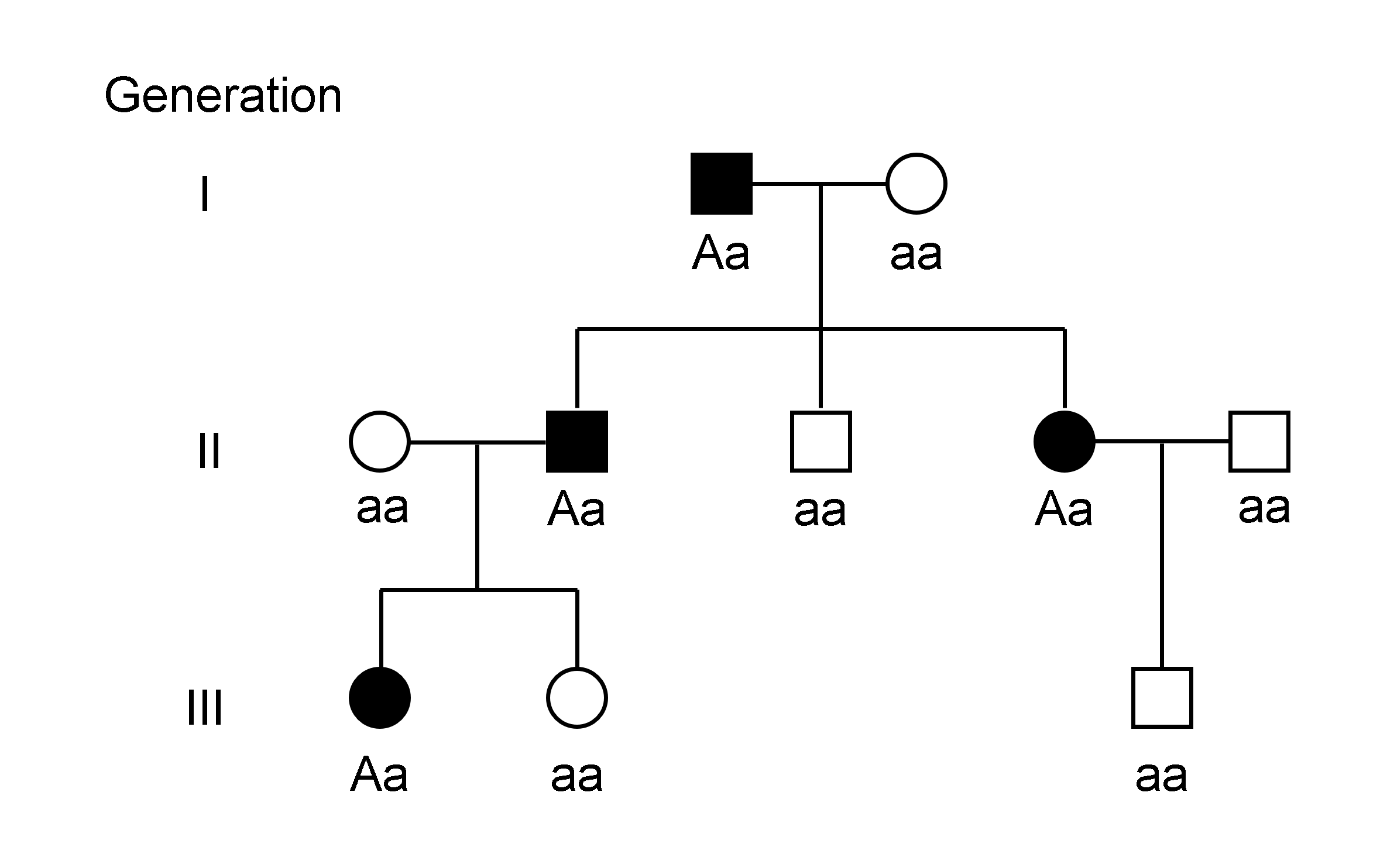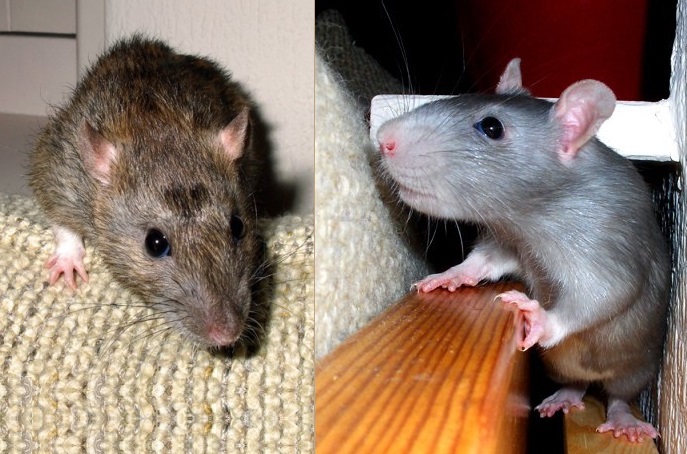|
Liver (color)
Liver is a color name for a kind of brown, first recorded as such in English language, English in 1686. It may refer to the color of the Liver, organ. In particular, Liver describes a dark brown color in the coats of dogs and horses. In dogs In dogs, the Liver color is caused by dilution of the eumelanin (black) pigment by the B locus. The gene that causes Liver is recessive, so a BB or Bb dog has normal black pigment. Only a bb dog is Liver. There are several different recessive b genes, but they all turn the coat brown. They are only distinguishable through genetic testing. Liver may also be called different names such as Brown, Chocolate, or Red. Red is a very misleading term, and should be avoided when referring to the color liver because it can be confused for phaeomelanin pigment. This second pigment is what colors all the "true red" or yellow parts of a dog. Liver dilution can also be combined with other genes that dilute a dog's coat. The D locus dilutes black pigment ... [...More Info...] [...Related Items...] OR: [Wikipedia] [Google] [Baidu] |
Chestnut (coat)
Chestnut is a hair coat color of horses consisting of a reddish-to-brown coat with a mane and tail the same or lighter in color than the coat. Chestnut is characterized by the absolute absence of true black hairs. It is one of the most common horse coat colors, seen in almost every breed of horse. Chestnut is a very common coat color but the wide range of shades can cause confusion. The lightest chestnuts may be mistaken for palominos, while the darkest shades can be so dark they appear black. Chestnuts have dark brown eyes and black skin, and typically are some shade of red or reddish brown. The mane, tail, and legs may be lighter or darker than the body coat, but unlike the bay they are never truly black. Like any other color of horse, chestnuts may have pink skin with white hair where there are white markings, and if such white markings include one or both eyes, the eyes may be blue. Chestnut foals may be born with pinkish skin, which darkens shortly afterwards. Chest ... [...More Info...] [...Related Items...] OR: [Wikipedia] [Google] [Baidu] |
Champagne Gene
The champagne gene is a simple dominant allele responsible for a number of rare horse coat colors. The most distinctive traits of horses with the champagne gene are the hazel eyes and pinkish, freckled skin, which are bright blue and bright pink at birth, respectively. The coat color is also affected: any hairs that would have been red are gold, and any hairs that would have been black are chocolate brown. If a horse inherits the champagne gene from either or both parents, a coat that would otherwise be chestnut is instead gold champagne, with bay corresponding to amber champagne, seal brown to sable champagne, and black to classic champagne. A horse must have at least one champagne parent to inherit the champagne gene, for which there is now a DNA test. Unlike the genes underlying tobiano, dominant white, frame overo spotting and the Leopard complex common to the Appaloosa, the champagne gene does not affect the location of pigment-producing cells in the skin. Nor does the ... [...More Info...] [...Related Items...] OR: [Wikipedia] [Google] [Baidu] |
Dun Gene
The dun gene is a dilution gene that affects both red and black pigments in the equine coat color, coat color of a horse. The dun gene lightens most of the body while leaving the mane (horse), mane, tail, legs, and primitive markings the shade of the undiluted base coat color. A dun horse always has a dark dorsal stripe down the middle of its back, usually has a darker face and legs, and may have transverse striping across the shoulders or horizontal striping on the back of the forelegs. Body color depends on the underlying equine coat color genetics, coat color genetics. A classic "bay dun" is a gray-gold or tan, characterized by a body color ranging from sandy yellow to reddish brown. Duns with a chestnut (horse color), chestnut base may appear a light tan shade, and those with black horse, black base coloration are a smoky gray. Manes, tails, primitive markings, and other dark areas are usually the shade of the undiluted base coat color. The dun gene may interact with all other ... [...More Info...] [...Related Items...] OR: [Wikipedia] [Google] [Baidu] |
Bay (horse)
Bay is a equine coat color, hair coat color of horses, characterized by a reddish-brown or brown body color with a black point coloration on the mane (horse), mane, tail (horse), tail, Pinna (anatomy), ear edges, and lower legs. Bay is one of the most common coat colors in many horse breeds. The black areas of a bay horse's hair coat are called "black points", and without them, a horse is not a bay horse. Black points may sometimes be covered by white horse markings, markings; however such markings do not alter a horse's classification as "bay". Bay horses have dark skin – except under white markings, where the skin is pink. Genetically, bay occurs when a horse carries both at least one dominant Agouti gene and at least one dominant Extension gene. While the basic genetics that create bay coloring are fairly simple, the genes themselves and the mechanisms that cause shade variations within the bay family are quite complex and, at times, disputed. The genetics of dark shades ... [...More Info...] [...Related Items...] OR: [Wikipedia] [Google] [Baidu] |
Sooty Gene
A sooty or smutty Equine coat color, horse coat color is characterized by black or darker hairs mixed into a horse's coat, typically concentrated along the topline of the horse and less prevalent on the underparts. The effect is especially pronounced on buckskin (horse), buckskins and palominos. Sootiness is believed to be an inherited trait involving multiple genes, however the details are not yet known. Horses without any visible sooty coloration are termed "clear-coated." On bay horse, bay-based horses, the most common type of sooty is black countershading. This darkens the top side of the horse, sometimes turning the back, croup, and shoulder almost black, while leaving the underside of the horse redder. At its darkest, this effect may be confused with Seal brown (horse), seal brown, while in minimal forms the dark hairs may not be noticed. Dapples of red often appear within the dark region. Many horses with the sooty trait have a darker mask on the bony parts of the face. O ... [...More Info...] [...Related Items...] OR: [Wikipedia] [Google] [Baidu] |
Genotype
The genotype of an organism is its complete set of genetic material. Genotype can also be used to refer to the alleles or variants an individual carries in a particular gene or genetic location. The number of alleles an individual can have in a specific gene depends on the number of copies of each chromosome found in that species, also referred to as ploidy. In diploid species like humans, two full sets of chromosomes are present, meaning each individual has two alleles for any given gene. If both alleles are the same, the genotype is referred to as Zygosity, homozygous. If the alleles are different, the genotype is referred to as heterozygous. Genotype contributes to phenotype, the observable traits and characteristics in an individual or organism. The degree to which genotype affects phenotype depends on the trait. For example, the petal color in a pea plant is exclusively determined by genotype. The petals can be purple or white depending on the alleles present in the pea plan ... [...More Info...] [...Related Items...] OR: [Wikipedia] [Google] [Baidu] |
Phenotype
In genetics, the phenotype () is the set of observable characteristics or traits of an organism. The term covers the organism's morphology (physical form and structure), its developmental processes, its biochemical and physiological properties, and its behavior. An organism's phenotype results from two basic factors: the expression of an organism's genetic code (its genotype) and the influence of environmental factors. Both factors may interact, further affecting the phenotype. When two or more clearly different phenotypes exist in the same population of a species, the species is called polymorphic. A well-documented example of polymorphism is Labrador Retriever coloring; while the coat color depends on many genes, it is clearly seen in the environment as yellow, black, and brown. Richard Dawkins in 1978 and again in his 1982 book '' The Extended Phenotype'' suggested that one can regard bird nests and other built structures such as caddisfly larva cases and beaver dams ... [...More Info...] [...Related Items...] OR: [Wikipedia] [Google] [Baidu] |
Dilution Gene
A dilution gene is any one of a number of genes that act to create a lighter coat color in living creatures. There are many examples of such genes: General Diluted coat colors have melanocytes, but vary from darker colors due to the concentration or type of these pigment-producing cells, not their absence. Pigment dilution, sometimes referred to as hypomelanism, has been called leucism, albinism (perfect, impartial, or dilute), ghosting, paling, and isabellinism. *Albinism describes a condition where pigment cells synthesize little or no pigment *Leucism describes a condition that creates loss of pigment cells Cats Cat coat genetics discusses many dilution genes in cats. Dogs In dogs, a mutation of the ''MLPH'' locus known as the dilute gene causes eumelanin to lighten while pheomelanin remains almost unchanged. Dogs of some breeds with the dilute gene often suffer from colour dilution alopecia (CDA). Appearance Of the colour shades found in the coat of dogs, the light brown ... [...More Info...] [...Related Items...] OR: [Wikipedia] [Google] [Baidu] |
Black (horse)
Black is a hair coat color of horses in which the entire hair coat is black. It is not uncommon to mistake dark chestnuts or bays for black. Black horses have dark brown eyes, black skin, and wholly black hair coats without any areas of permanently reddish or brownish hair. They may have pink skin beneath any white markings under the areas of white hair, and if such white markings include one or both eyes, the eyes may be blue. Many black horses "sun bleach" with exposure to the elements and sweat, and therefore their coats may lose some of their rich black character and may even resemble bay or seal brown, though examination of the color of hair around the eyes, muzzle and genitals will determine color. Some breeds of horses, such as the Friesian horse, Murgese and Ariegeois (or Merens), are almost exclusively black. Black is also common in the Fell pony, Dales pony, Ostfriesen and Alt-Oldenburger, Kladruber, and Groningen. Visual identification When identifying ... [...More Info...] [...Related Items...] OR: [Wikipedia] [Google] [Baidu] |
Palomino
Palomino is a equine coat color, genetic color in horses, consisting of a gold coat and white mane (horse), mane and tail; the degree of whiteness can vary from bright white to yellow. The palomino color derived from the breeding of Spanish horses in the United States. Genetically, the palomino color is created by a single allele of a dilution gene called the cream gene working on a "red" (chestnut (coat), chestnut) base coat. Palomino is created by a genetic mechanism of incomplete dominance, hence it is not considered true-breeding. However, most color breed registries that record palomino horses were founded before equine coat color genetics were understood as well as they are today, therefore the standard definition of a palomino is based on the visible coat color, not heritability nor the underlying presence of the dilution gene. Due to their distinct color, palominos stand out in a show ring, and are much sought after as parade horses. They were particularly popular in m ... [...More Info...] [...Related Items...] OR: [Wikipedia] [Google] [Baidu] |








